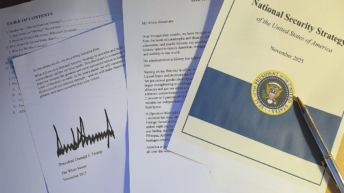
Prime Minister Narendra Modi, while returning from his trip to the United States in the last week of September 2021, brought back 157 artefacts that had been stolen and smuggled out of India in the past. Earlier in August 2021, Australia also returned 14 artefacts to India. The list of 157 artefacts returned by the US government includes items ranging from an exquisite bronze Nataraja from the 12th Century to historic antiquities such as a copper anthropomorphic object dated to 2000 BCE. Nearly 45 of these artefacts are from before the Common Era.
In October 2021, Interpol published the Assessing Crimes Against Cultural Property Survey (2020), which drew special interest in Indian circles as the cover carried an image of a Murti (statue) of Lord Ganesha (no details available). This reignited the Indian memory about the scale of theft of temple and cultural properties before and after independence.
The Ganesha Murti reveals that the bulk of India’s cultural properties that have been stolen belong to temples and are the heritage of a living civilization where divine images belong to the temple and devotees, and are testimony to a region’s living history. Though these are valuable art pieces because of the talent of the unknown craftsmen, they are sacred Vigraha-s (icons) and are not objects d’art to be displayed in museums or private collections.
It is gratifying that the mūrti of Annapurna Devī, stolen a century ago from Kashi, recently returned from Canada and was installed in the premises of Kashi Vishwanath Temple (Nov. 15, 2021).
Cultural property belongs not only to any given geographical region, but to its denizens, even if they no longer occupy parts of that geographical region. Cultural property crimes are acts of vandalism as they can permanently destroy civilizational history and memory.
Cultural property trafficking is seen as a low-risk high-reward business activity by transnational organised crime groups. These groups falsify ownership and transmission records of the artefacts being smuggled; global agencies believe that such activities might also be a source of terror financing.
Since the 1954 Hague Convention for the Protection of Cultural Property in the Event of Armed Conflict, the global community has continuously emphasized the need to protect cultural property. This resulted in the adoption of the 1970 UNESCO Convention on the Means of Prohibiting and Preventing the Illicit Import, Export and Transfer of Ownership of Culture Property. The Revised Draft Resolution: Combating Transnational Organized Crime Against Cultural Property was adopted at the 10th Session (2020) of the UN Convention against Transnational Organised Crime.
International organisations like the INTERPOL, UNESCO and the UN Office on Drugs and Crime (UNODC) have been active in this sphere and helping to coordinate national and regional resources to combat cultural property crimes. The INTERPOL Expert Group on Stolen Cultural Property was set up and held its first meeting in 2004. The world became aware of the need to create a committee to deal with stolen cultural property after the looting of the National Museum of Iraq in 2003.
However, India was always aware of this danger. In recent years, India’s civil society has become active in coordinating efforts to restore cultural property to its rightful home and to the descendants of its creators. The India Pride Project (IPP) is a global volunteer effort started by two Singapore-based Indians in 2014 to track and reinstate India’s stolen heritage. They have helped track major thefts of Murti-s across the country to their end destinations in various museums and auction houses.
S. Vijay Kumar, co-founder of the India Pride Project, observed that Australia returned the images because of the existence of documented and archival photographs and publications on the sites of Tamil Nadu. Kumar stated that there was no attempt to investigate the spate of thefts from the Buddhist site of Chandavaram in the early 2000s and that the IPP has matched many objects from the same site to museums in the US, Singapore and the UAE; however, the custodians have not followed up to seek their return.
The Internet and the dark-web had become a tool for traffickers, which had made it difficult for law enforcement to combat the illicit trade in stolen cultural property. However, the Internet is now used against traffickers. Today, States use the same to issue immediate alerts at all ports and to all agencies, national and global. Databases have been set up around the world to help find stolen artefacts once they enter the market. The INTERPOL has an impressive database on stolen works of art. Many nations are developing their own databases such as the TREIMA database in France.
India needs to establish a dedicated cultural property wing within a Central enforcement agency to counter heritage theft. Our temples are symbols of our thriving heritage. Tragically, while some monuments and some temples have got the Archaeological Survey of India (ASI) Heritage tag, most temples remain in the unprotected category as there is no classification system for such sites.
At present, when the ASI gives a temple a Heritage tag, it becomes a “monument” under its protection. This is the old colonial approach to discovering and preserving the Heritage found in colonies; it was good and effective up to a point. But, under this model, the ASI does not like its “monuments” to be “used” by people, such as priests and devotees. As this approach cannot work with Temples, these are largely left unprotected.
The Government of India should update this model and cater to the dynamism of the living civilization of India. Many temples are 500 to 1000 years-old, some are even older; hence, the ASI should protect this rich and living heritage. A beginning can be made by listing and documenting each temple thoroughly, thus creating a database of living temples and their cultural properties.
India should prepare a single national database of stolen cultural properties along with all available and accessible forms of identification of such properties. This list should be immediately updated with reports of any new theft so that details reach all concerned national and international agencies in real time and facilitate early interception and return.
This database should be linked up with the INTERPOL database. Information can then be displayed on the INTERPOL’s ID-Art Mobile App launched this year, which allows everyone from law enforcement or general public to access the INTERPOL database and report any potential cultural property crime.
With terrorists eyeing cultural property as an easy way to finance their activities, the world has woken up to the grim reality that the theft of cultural properties does not just translate into a loss of material human heritage, but supports its nemesis by financing the destruction of human life and culture itself in some part of the globe. This is now a matter of serious international concern.





Add comment